
100KV絕緣介電強度試驗儀 氣體電介質擊穿
在電場作用下氣體分子發生碰撞電離而導致電極間的貫穿性放電.其影響因素很多,主要有作用電壓,電板形狀,氣體的性質及狀態等.氣體介質擊穿常見的有直流電壓擊穿,工頻電壓擊穿,高氣壓電擊穿,沖擊電壓擊穿,高真空電擊穿,負電性氣體擊穿等.空氣是很好的氣體絕緣材料,電離場強和擊穿場強高,擊穿后能迅速恢復絕緣性能,且不燃,不爆,不老化,無腐蝕性,因而得到廣泛應用.為提供高電壓輸電線或變電所的空氣間隙距離的設計依據(高壓輸電線應離地面多高等),需進行長空氣間隙的工頻擊穿試驗.
100KV絕緣介電強度試驗儀 主要配置:
1、試驗主機一臺 5萬伏高壓發生器一臺
2、電磁自動放電裝置一套。 電壓擊穿計算機測控軟件一套
3、全自動微電腦電壓調壓裝置一套(串口方式)
4、試驗電極規格(紫銅) 計算機一套(專用抗強干擾計算機)
5、試驗用油盒一只:材質為有機玻璃 國家一級計量鑒定質檢份
6、產品使用說明書一份 合格證一份
介電系數,是一個在電的位移和電場強度之間存在的比例常量。這一個常量在自由的空間(一個真空)中是8.85?10的-12次方法拉第/米(F/m)。在其它的材料中,介電系數可能差別很大,經常遠大于真空中的數值,其符號是eo。 在工程應用中,介電系數時常在以相對介電系數的形式被表達,而不是絕對值。如果eo表現自由空間(是,8.85?10的-12次方F/m)的介電系數,而且e是在材料中的介電系數,則這個材料的相對介電系數(也叫介電常數)由下式給出: ε1=ε/εo=ε?1.13?10的11次方 很多不同的物質的介電常數超過1。這些物質通常被稱為絕緣體材料,或是絕緣體。普遍使用的絕緣體包括玻璃,紙,云母,各種不同的陶瓷,聚乙烯和特定的金屬氧化物。絕緣體被用于交流電(AC),聲音電波(AF)和無線電電波(射頻)的電容器和輸電線路。
Product features:
1. Using intelligent integrated circuits for constant speed boosting.
2. Support short circuit test requirements in a short period of time.
3. Voltage test accuracy:≤1%.
4. Test voltage continuously adjustable: 0-50KV.
5. The current can be collected up to mA level.
6. Provide a national first level measurement unit calibration and verification certificate or a certificate of the customer's designated measurement unit.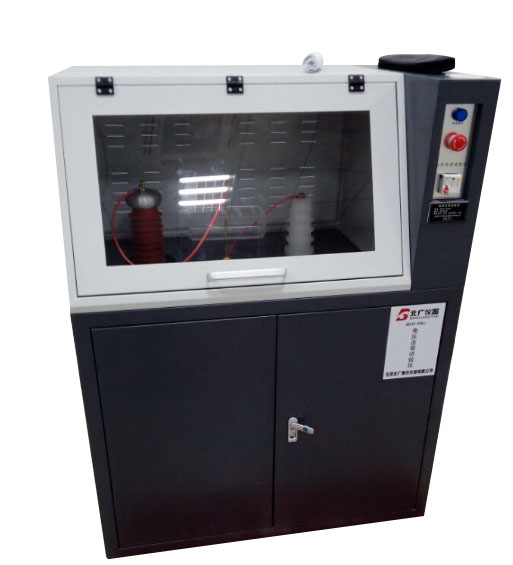
7. Power supply: 220V?10% single-phase AC voltage and 50Hz?1% frequency.
8. Current and voltage stability: When the external power supply voltage fluctuates by 10%
Dielectric strength is a measure of the electrical strength of a material as an insulator It is defined as the maximum voltage per unit thickness that a sample can withstand when it is broken down, expressed in volts per unit thickness The higher the dielectric strength of a substance, the better its quality as an insulator
Dielectric strength is a measure of a material's ability to withstand high voltage without generating dielectric breakdown. The sample is placed between electrodes and the applied voltage is increased through a series of steps until dielectric breakdown occurs, in order to measure the dielectric strength. Although the results obtained are in kV/mm units, it does not indicate that they are independent of the thickness of the sample. Therefore, comparability of data for various materials can only be obtained under the condition of the same sample thickness.
Insulation dielectric strength test and insulation resistance test
The insulation dielectric strength test is the application of a specified voltage within a specified time period between insulated components or between insulated components and ground, in order to determine whether the motor can operate safely at rated voltage and whether it can withstand overvoltage caused by switches, surges, and other similar phenomena, and to evaluate whether the insulation material or insulation gap of the motor is suitable. If the motor has defects, breakdown discharge or damage may occur after applying the test voltage. The breakdown discharge is manifested as flashover (surface discharge), spark discharge (air discharge), or breakdown (breakdown discharge) phenomenon. Excessive leakage current may cause changes in electrical parameters or physical properties.
產品特點:
1、采用智能集成電路進行勻速升壓。
2、支持短時間內短路試驗要求。
3、電壓試驗精度: ≤1%。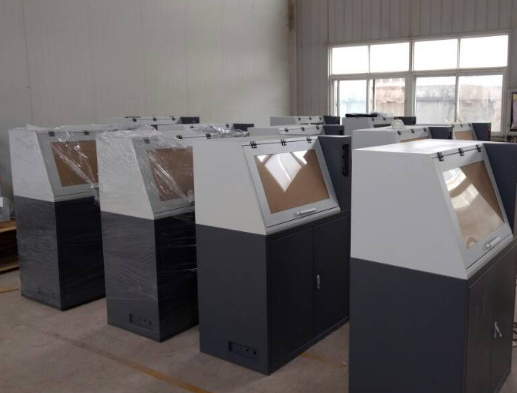
4、試驗電壓連續可調:0--50KV。
5、電流可采集到mA級。
6、出具國家一級計量單位校準檢定證書或出具客戶指定計量單位的證書。
7、電源:220V?10%的單相交流電壓和50Hz?1%的頻率。
8、電流電壓穩定度:外界電源電壓波動10%時
介電強度是一種材料作為絕緣體時的電強度的量度.它定義為試樣被擊穿時,單位厚度承受的最大電壓,表示為伏特每單位厚度.物質的介電強度越大,它作為絕緣體的質量越好.
介電強度,是材料抗高電壓而不產生介電擊穿能力的量度,將試樣放置在電極之間,并通過一系列的步驟升高所施加的電壓直到發生介電擊穿,以次測量介電強度。盡管所得的結果是以kv/mm為單位的,但并不表明與試樣的厚度無關。因此,只有在試樣厚度相同的條件下得到各種材料的數據才有可比性。
絕緣介電強度試驗與絕緣電阻測試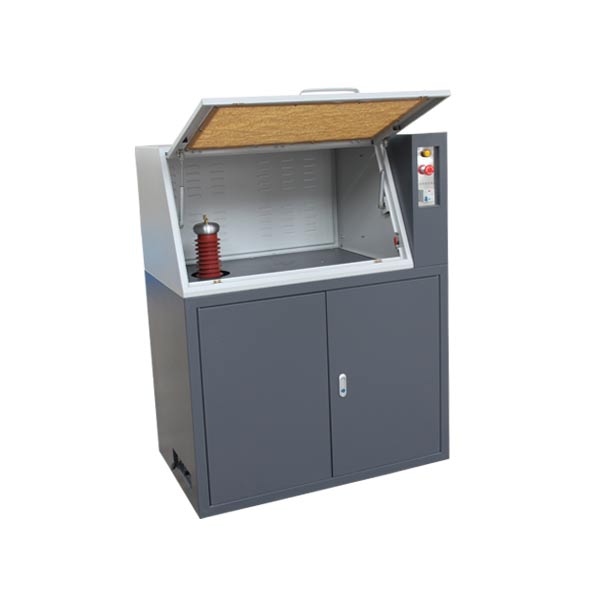
絕緣介電強度試驗是在相互絕緣的部件之間或絕緣的部件與地之間,在規定時間內施加規定的電壓,以此來確定電機在額定電壓下能否安全工作,能否耐受由于開關、浪涌及其它類似現象所導致的過電壓的能力,從而評定電機絕緣材料或絕緣間隙是否合適。如果電機有缺陷,則在施加試驗電壓后,會產生擊穿放電或損壞。擊穿放電表現為飛弧(表面放電)、火花放電(空氣放電)或擊穿(擊穿放電)現象。過大的漏電流可能引起電參數或物理性能的改變 。
軟件功能:
01、軟件平臺:WINDOWS窗口操作平臺,界面直觀,便于操作
02、曲線顯示:在實驗過程中可以動態顯示試驗曲線
03、數據導出:可以對試驗結果導入EXCEL表格
04、實驗報告:可以人為設置報告名稱,并對實驗報告進行打印
05、試驗方式:可以根據需求對直流試驗和交流試驗進行靈活選擇
06、試驗方法:可以根據需求自行選擇擊穿電壓、耐壓試驗、梯度試驗
07、參數設置:可以根據不同的試驗方式及試驗方法靈活設置所需的不同參數值
08、試樣設置:可對不同標準的試樣參數靈活設置
09、人員管理:設置用戶名及密碼,不同的操作員登入進行不同的試驗,互不影響
10、標準選擇:含有不同標準,可根據需求自行選擇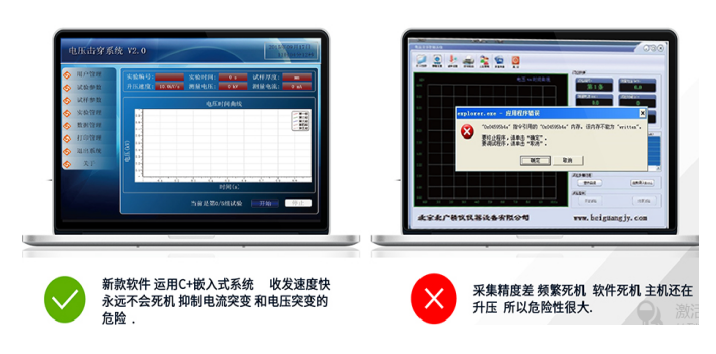
11、連續操作:連續操作試驗時,可直接在軟件里結束試驗,進行二次試驗
Software features:
01. Software platform: Windows window operation platform, intuitive interface, easy to operate
02. Curve display: During the experiment, the test curve can be dynamically displayed
03. Data export: It is possible to import experimental results into an Excel spreadsheet
04. Experimental report: The report name can be manually set and the experimental report can be printed
05. Test method: Flexible selection of DC and AC tests can be made according to requirements
06. Test method: You can choose breakdown voltage, withstand voltage test, and gradient test according to your needs
07. Parameter setting: Different parameter values can be flexibly set according to different testing methods and methods
08. Sample setting: Flexible setting of sample parameters for different standards
09. Personnel management: Set username and password, different operators log in for different experiments, without affecting each other
10. Standard selection: Contains different standards, can be selected according to needs
11. Continuous operation: During the continuous operation test, the test can be directly ended in the software and a second test can be conducted
絕緣介電強度試驗與絕緣電阻測試是不能等同的。清潔、干燥的絕緣體盡管具有高的絕緣電阻,但卻可能發生不能經受絕緣介電強度試驗的故障;反之,一個臟的、損傷的絕緣體,其絕緣電阻雖然低,但在高電壓下也可能不會被擊穿。由于絕緣部件是由不同材料制成或是由不同材料合成的,它們的絕緣電阻各不相同。因此,絕緣電阻的測試不能完全代表對清潔度或無損傷程度的直接量度。但是,這種測試對確定高溫、潮濕、污物、氧化或揮發性材料等對絕緣特性影響程度是極為有益的 。
事實上,一臺由于過熱而使絕緣材料已經老化變脆的電機,其絕緣電阻仍可高達100MΩ,但卻無法通過絕緣介電強度試驗。絕緣電阻測試對絕緣材料受潮特別敏感,對絕緣材料老化則顯得力不從心。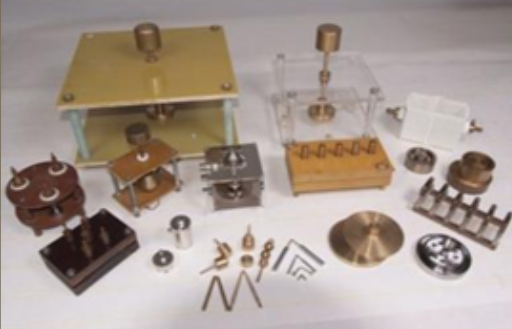
絕緣介電強度試驗一般采用50Hz正弦波交流電,而絕緣電阻測試均采用直流電。
整機組成:
升壓部件:由調壓器和高壓變壓器組成0~50KV的升壓部分。動部件:由步進電機均勻調節調壓器使加給高壓變壓器的電壓變化。檢測部件:由集成電路組成的測量電路。通過信號線把檢測的模擬信號和開關信號傳給計算機。計算機軟件:通過智能電路把由檢測設備采集的測控信號傳給計算機。計算機根據采集的信息控制設備運行并處理試驗結果。試驗電極:根據國家標準(1408.1-2006)隨設備提供三個電極,具體規格為:Ф25mm?25mm兩個;Ф75mm?25mm一個。(訂做除外)
Overall composition:
Boosting component: The boosting part of 0-50KV is composed of a voltage regulator and a high-voltage transformer. Moving parts: The voltage regulator is uniformly adjusted by a stepper motor to change the voltage applied to the high-voltage transformer. Detection component: a measurement circuit composed of integrated circuits. Send the detected analog signals and switch signals to the computer through signal lines. Computer software: transmits the measurement and control signals collected by the detection equipment to the computer through intelligent circuits. The computer controls the operation of the equipment based on the collected information and processes the test results. Test electrodes: According to the national standard (1408.1-2006), three electrodes are provided with the equipment, with specific specifications as follows:ФTwo 25mm x 25mm;ФOne 75mm x 25mm. (Excluding customization)
控制方式:計算機控制
產品型號:BDJC系列
符合國標:GB/T1408-2006、ASTM D149
適用材料:固體絕緣材料
功 率:10KVA
最大電壓:100KV
試驗方式:直流/交流:擊穿、耐壓、階梯
顯示方式:曲線/數據顯示,數據打印。
試驗空間:絕緣油/空氣
升壓速率:10V/S-10KV/S
整機精度:≤2%
滿足標準:
儀器依據以下標準中對擊穿電壓部分的要求制造
GB/T 1408-2006絕緣材料電氣強度試驗方法
GB/T1695-2005硫化橡膠工頻電壓擊穿強度和耐電壓強度試驗
GB/T3333電纜紙工頻電壓擊穿試驗方法
HG/T 3330絕緣漆漆膜擊穿強度測定法
GB12656電容器紙工頻電壓擊穿試驗方法
ASTM D149固體電絕緣材料在工業電源頻率下的介電擊穿電壓和介電強度的試驗方法.
擊穿場強
在發生擊穿時的電場強度依賴于電介質(絕緣體)的各自的幾何形狀和與該電場被施加在電極上,以及在其中所述增加速率電場被施加。由于電介質材料通常含有微小的缺陷,實際的電介質強度將是理想的無缺陷材料的固有電介質強度的一部分。與相同材料的較厚的樣品相比,介電膜傾向于表現出更高的介電強度。例如,幾百納米至幾微米厚的二氧化硅膜的介電強度大約為0.5GV / m。然而非常薄的層(下面,比方說,100納米)成為由于部分導電電子隧穿。在需要最大的實際介電強度的地方,例如高壓電容器和脈沖變壓器,使用多層薄介電膜。由于氣體的絕緣強度取決于電極的形狀和結構而變化,通常以氮氣的介電強度的一部分來測量。
Test preparation and environment:
1. Sample treatment
(1) Dip a silk cloth in a solvent that has no corrosive effect on the sample and wipe it clean.
⑵Pre processing and conditional processing: The processing conditions and methods can be selected from Appendix Tables 1 and 2 of this standard based on the performance requirements of the product. Special requirements can be specified separately by the product standard.
The electrical strength of insulation materials varies with temperature and moisture content. Unless otherwise specified for the test material, the sample should be treated for no less than 24 hours at 23?2℃and a relative humidity of (50?5)%.
Before the test, the sample that has been dampened or immersed in liquid medium should be gently sucked off with filter paper to remove the liquid droplets. The time from the sample to the completion of the test should not exceed 5 minutes.
2. Media:
⑴Gas medium: Air is used. If there is a flashover, a soft silicone rubber anti arc ring can be added around the electrode. There is a circular gap of about one millimeter between the anti flying arc ring and the electrode, with a ring width of 30mm.
⑵Liquid medium: Clean transformer oil is used for normal tests and hot tests below 90℃, and clean overheated cylinder oil is used for hot tests between 90℃and 300℃.
3. Test environment:
⑴Normal test environment:
The temperature is 20?5℃and the relative humidity is 65?5%.
The conditions for hot or humid environment testing shall be specified in Table 2 of the product standard reference record.
Determination of breakdown:
The presence of small holes, cracks, and burnt marks along the direction and position of the applied voltage on the sample indicates breakdown. If the marks are unclear, repeated application of the test voltage can be used to determine.
試驗準備和環境:
1.試樣的處理
⑴用綢布蘸對試樣無腐蝕作用的溶劑,擦凈試樣。
⑵預處理和條件處理:處理條件和方法可根據產品的性能要求從本標準附錄表1和表2中選取。有特殊要求的可由產品標準另行規定。
⑶絕緣材料的電氣強度隨溫度和含水量而變化。除被試材料已有規定外者,試樣應在23?2℃,相對濕度(50?5)%的條件下處理不少于24h。
⑷經過受潮或浸液體媒質的試樣在試驗前應用濾紙輕輕吸去液滴,從試樣取出到試驗完畢不應超過5分鐘。
⒉ 媒質:
⑴氣體媒質:采用空氣,如有閃絡可在電極周圍加柔軟硅橡膠防飛弧圈。防飛弧圈與電極之間有一毫米左右的環狀間隙,環寬30mm。
⑵液體媒質:常態試驗及90℃以下的熱態試驗采用清潔的變壓器油,90℃至300℃以內的熱態試驗采用清潔的過熱氣缸油。
⒊試驗環境:
⑴常態試驗環境:
溫度為20?5℃,相對濕度為65?5%。
⑵熱態試驗或潮濕環境試驗條件由產品標準參照錄中表2予以規定。
擊穿的判斷:
試樣沿施加電壓方向及位置有貫穿小孔、開裂、燒焦等痕跡為擊穿,如痕跡不清可用重復施加試驗電壓來判斷。
我廠主要產品有:拉力材料試驗機,海綿泡沫落球回彈試驗機,海綿泡沫壓陷硬度測驗儀,海綿泡沫疲勞壓陷試驗機,熔融指數儀,塑料滑動摩擦磨損試驗機,電壓擊穿試驗儀,塑料球壓痕硬度計,馬丁耐熱試驗儀,海綿泡沫拉伸強度試驗機,介電常數與介質損耗測試儀,電容率測試儀,體積表面積電阻率測試儀,低溫脆性沖擊試驗儀,維卡熱變形試驗儀,啞鈴制樣機,阿克隆磨耗試驗機,簡支梁沖擊試驗機,懸臂梁沖擊試驗機,熔體流動速率儀,無轉子硫化儀等。
想了解其它相關信息,歡迎登錄北京北廣精儀儀器設備有限公司網站或電詢我們相關人員。
業務咨詢:932174181 媒體合作:2279387437 24小時服務熱線:15136468001 盤古機械網 - 全面、科學的機械行業免費發布信息網站 Copyright 2017 PGJXO.COM 豫ICP備12019803號